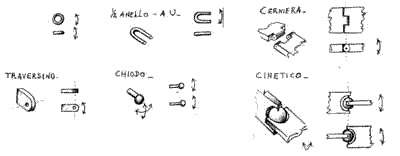|
In order to join two ore more parts of a jewel so that these can move with agility, joint and concatenation basic systems are used that allow the object to move and to adapt itself to the forms of the body. A ring that joins two parts, is the classical example of this union. Its functionality is often in contrast with the aesthetics that finds this solution inadeguate, just like it happens for the (clasp) invisible hinge connections (because hidden in the internal part). They give to the object a clearness of an extraordinary form to the detriment of the softness; the right compromise is quite difficult to obtain. Let's see the main types of connection.
|
|
|

